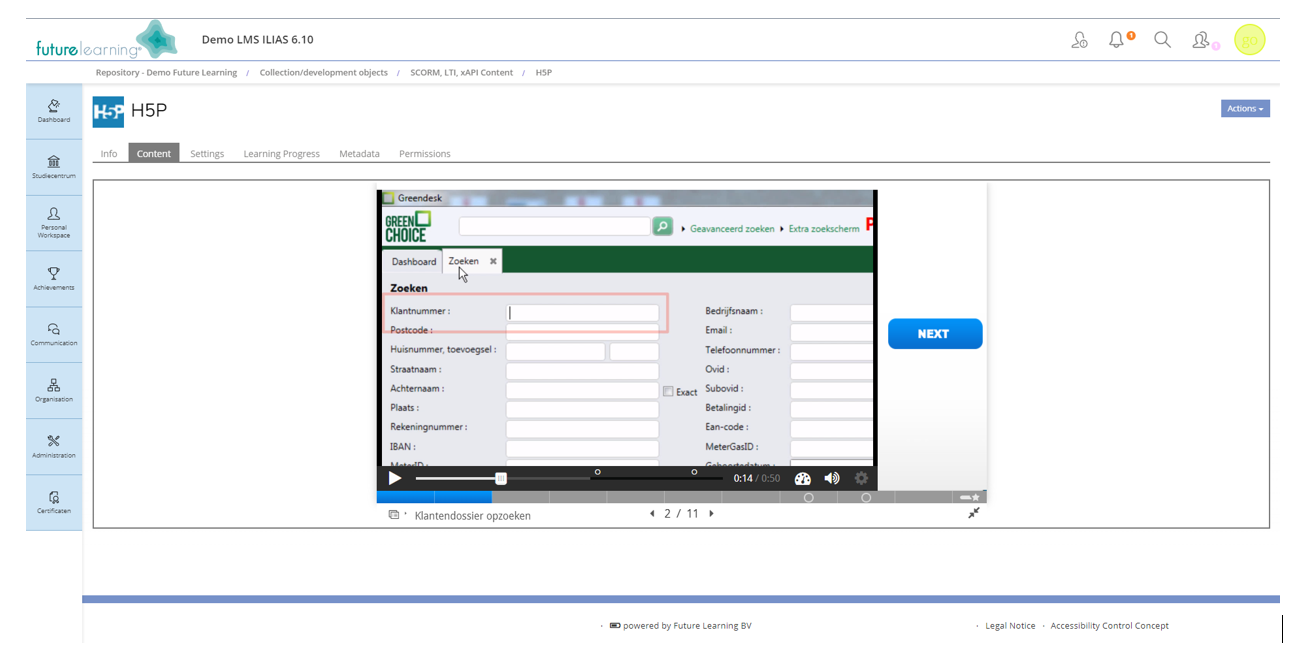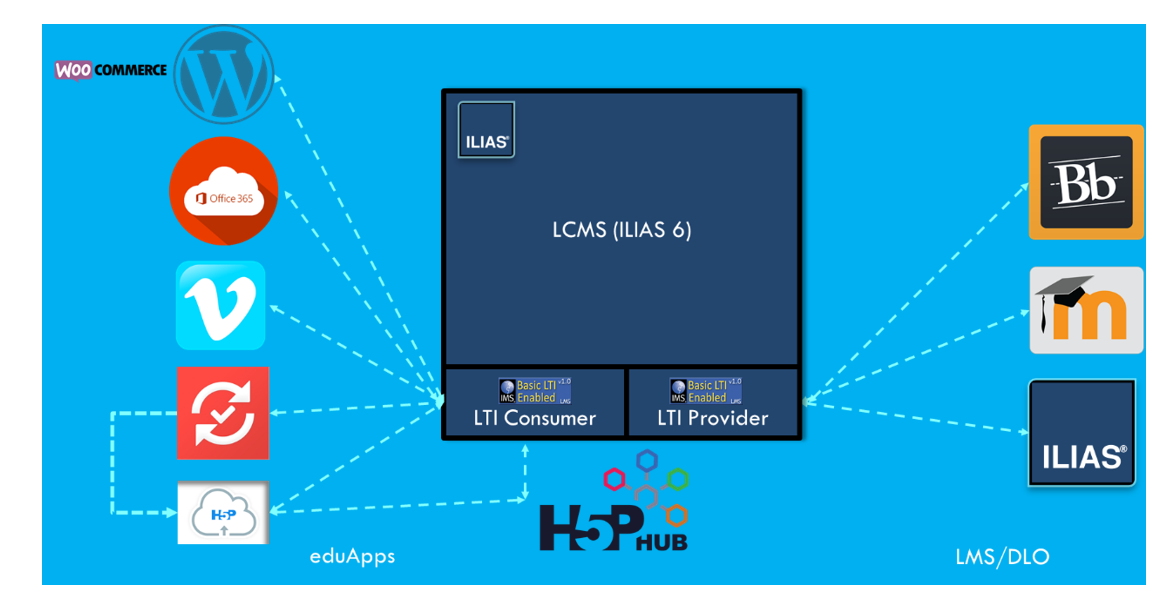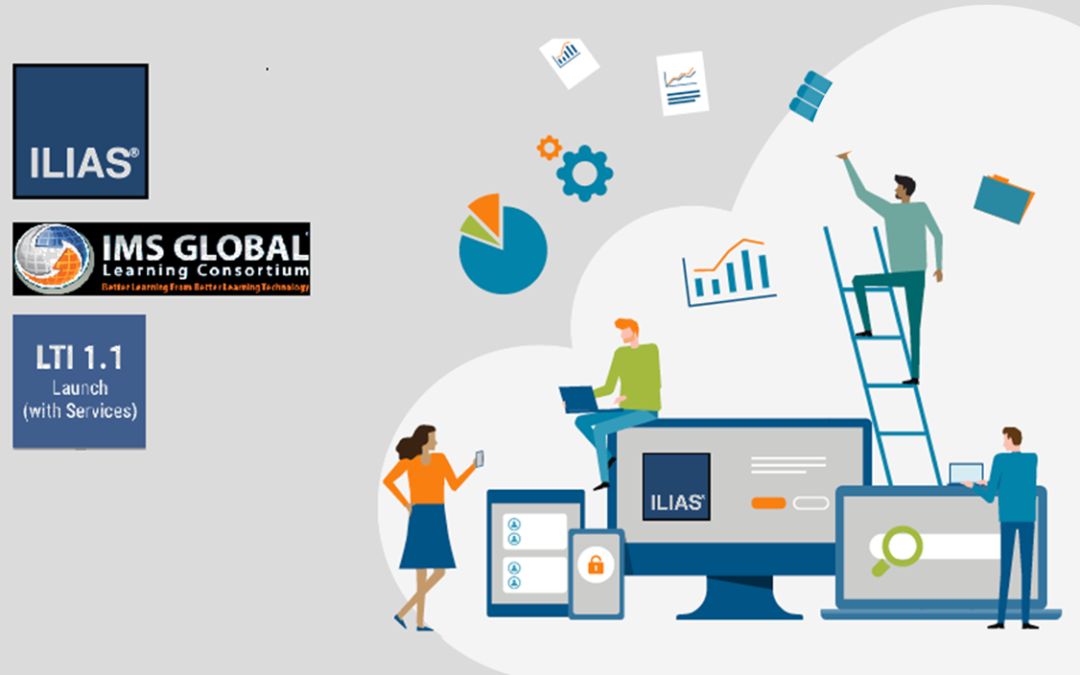ILIAS in combination with LTI: endless possibilities for your eLearning ecosystem
Why LTI? This is the central question of this white paper. In addition to the existing possibilities of an LMS, what advantages does LTI offer, and the ability to deploy all kinds of learning content?
With the IMS Global Learning Consortium’s Learning Tools Interoperability (LTI) standard, you can easily plug-and-play a wide range of external tools, learning content and learning activities available online within your LMS or ELO. These tools are also called EduApps. A known disadvantage of SCORM, another well-known learning standard sourced from the U.S. Department of Defense, is that packages must be created in external tools and uploaded to the LMS, which can lead to content management issues. SCORM has now been replaced by xAPI and CMI-5. These new learning standards also come from the American Department of Defense. These new standards have been created by a consortium of users and suppliers called LETSI based on actual user requirements and business cases.
LTI has been created more within the fields of education, publishing, government, and healthcare, and is designed to bypass content management woes and make it easier and faster to integrate and deploy learning services. Many schools, universities, hospitals use LTI because it allows them to focus on learning outcomes and not on technology. This also involves not only content, but the integration of other learning activities and tools. LTI and xAPI are relatively new learning standards that have similarities and differences. The most important similarity is that learning content does not have to be within the LMS, but can also reside on a content server. One difference is that LTI has a simple data report towards the LMS, a so-called Grade that can be stored by the LMS in the Learning Progress overview or Gradebook. But LTI also supports additional applications in addition to learning content. These are the so-called Outcomes. xAPI and CMI-5 an offer much more in this respect, they are more focused on detailed data analysis or learning analytics. Both make it possible to shield learning content on another servers through authentication.
When planning and building online courses, there are sometimes online resources or tools that perfectly complement existing course resources and teaching materials. A well-known example is H5P.COM. Typically, these tools are provided as SAAS services on a server other than the LMS. However, using content or tools that are not posted within your Learning Management System often means that students will have to log in to external applications separately, or that it will be difficult to retrieve results or grades. To enable easy integration of external tools into an LMS – and to ensure that this is done in a seamless and secure way – IMS Global developed the Learning Tool Interoperability standard (LTI). Assignment and Grade Services that allow progress from different tools to be easily merged into the LMS. In other words, LTI mainly focuses on making it easy to integrate additional tools and content. In LTI 2.0, the integration of tools within an LMS will become even more transparent. Barely distinguishable from the LMS built-in tools and activities.
Plug-and-play external tools for the LMS
Essentially, the LTI standard developed by IMS Global enables a secure exchange of information between an LMS, such as ILIAS or Moodle, and an external learning tool via authentication. The information exchanged between the LMS and the external tool includes all course information and user identity, which ensures that students can easily navigate from one learning tool to another without having to log in to each learning tool separately. Version 1.3 of LTI has even more functionality to make it easy such as a Names and Role Service. The name and role of the user is passed on to the Tool, for example teacher or student. Deep linking, which makes it possible to insert content with a few clicks and copy it within the LMS.

ILIAS and LTI: endless possibilities for an eLearning ecosystem
The open source LMS ILIAS supports LTI in two directions, to enable educators to use a wider variety of tools and resources to build their eLearning ecosystems. Many providers of additional learning tools support LTI because it allows them to easily integrate into the main LMS system and to provide additional functionality such as content, content creation, review, Plagiarism detection and many other tools needed in a modern digital world. Also includes integrated videoconferencing. If you look at the list of LTI-certified products, you’ll find a wide range of resources — some free and some paid — that you can add to your ILIAS LMS: from textbooks to chemistry and STEM tools, to dictation tools, and more.

The initial question why LTI? can now be answered. LTI makes an LMS more flexible, without having to resort to programming or using and maintaining plugins/addons. It is intended as a plug and play way to add both learning content, content creation and many other tools via the Web in a secure way. In other words, flexible, safe, easy, fast, and cost-effective. ILIAS supports LTI both as a consumer and provider, which makes ILIAS even more flexible. And that on the basis of open standards. This will only increase in the future of ILIAS.
Also check out our socials to always stay informed of the latest news about e-learning:
LinkedIn: Joke van Cappelle – Future Learning B.V.
Facebook: Future Learning B.V.
Instagram: Future_learning


Recent Comments